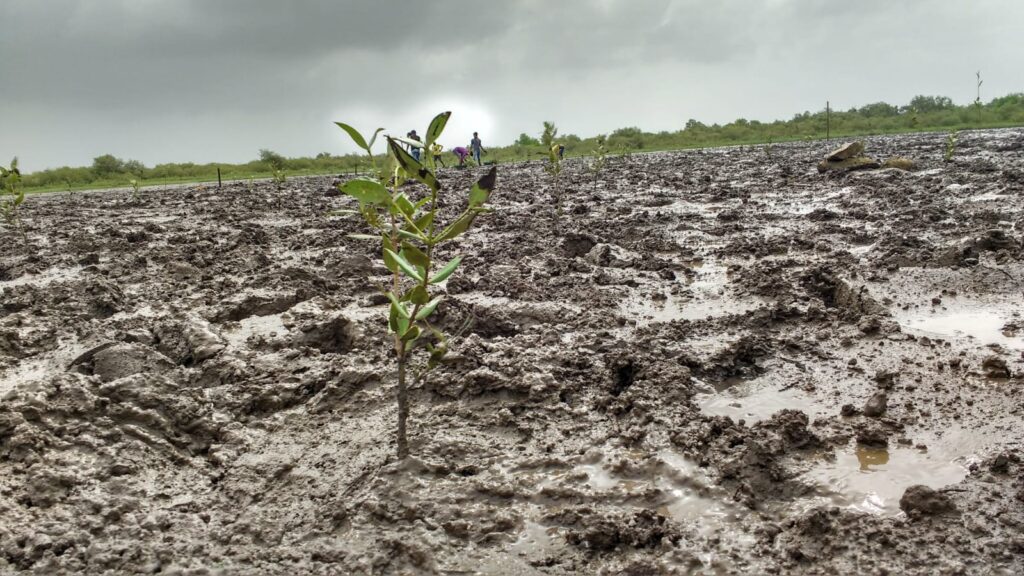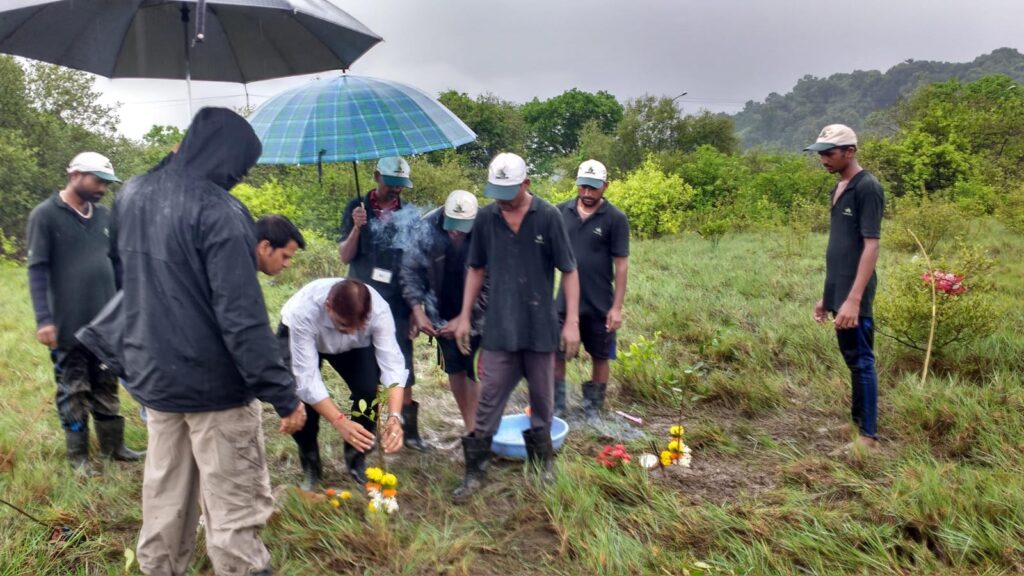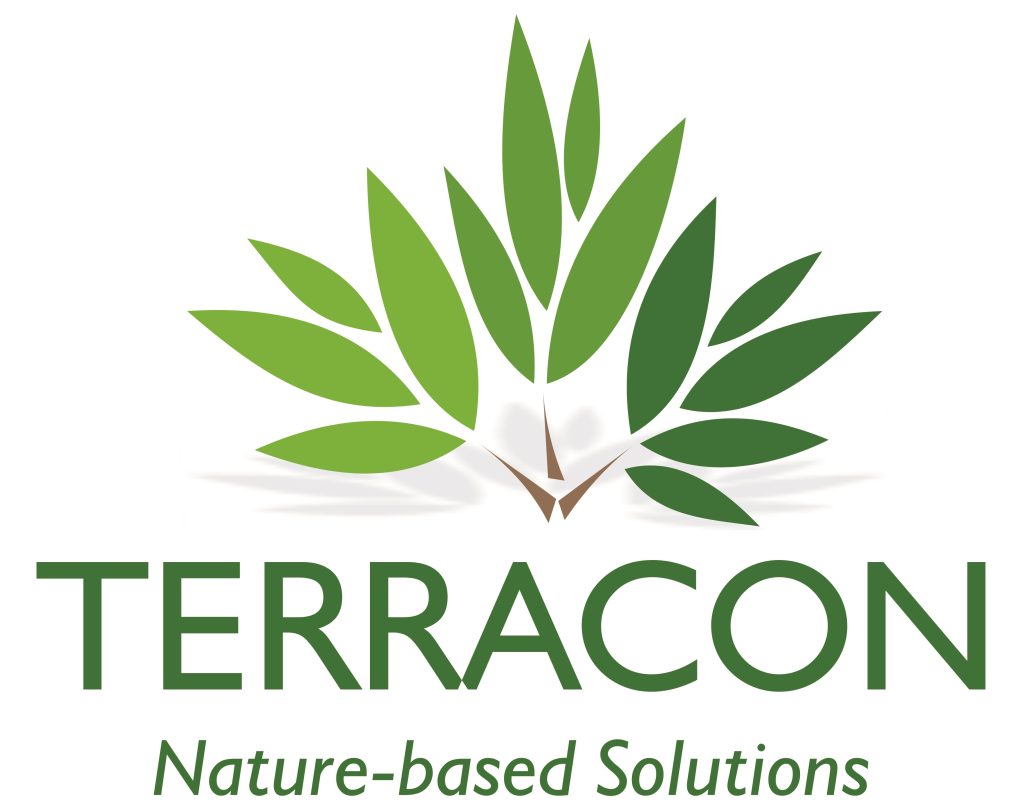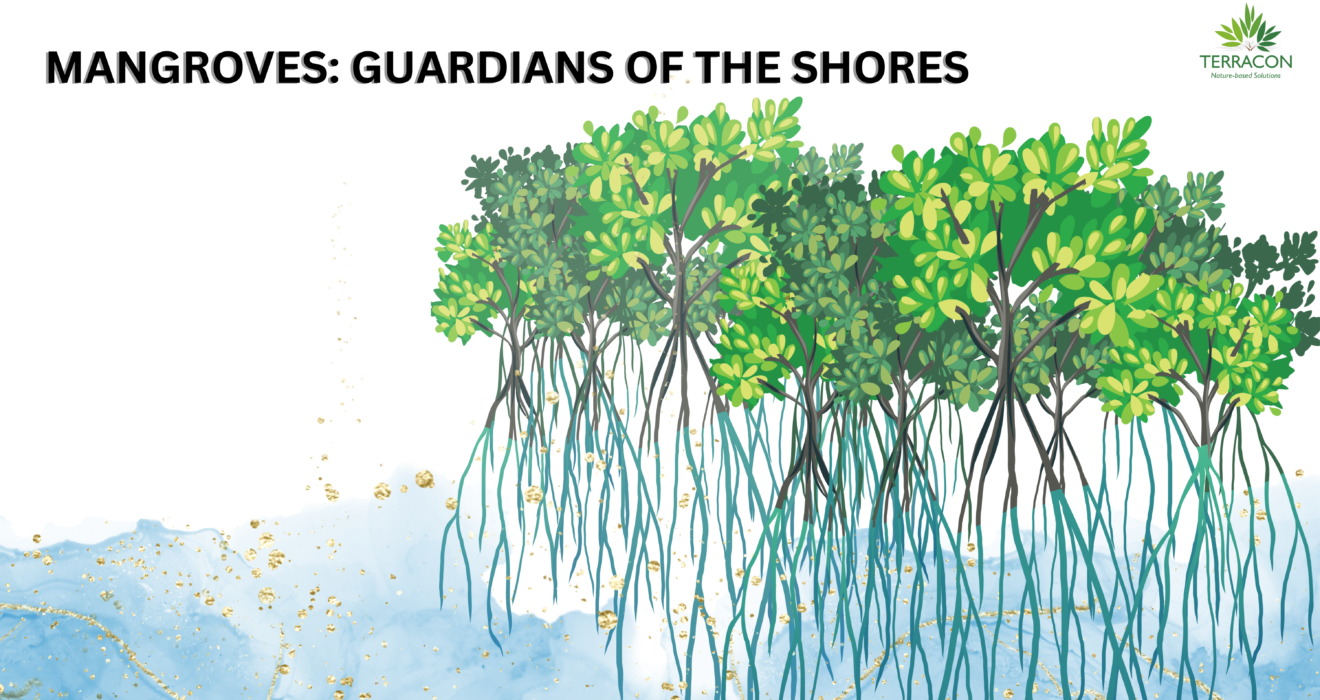Mangroves are a unique type of coastal ecosystem found in tropical and subtropical regions mainly between 30° N and 30° S latitudes, with the greatest mangrove area straddling the equator. They are dense forests of salt-tolerant trees and shrubs that thrive in intertidal zones, where land meets the sea.
Mangrove ecosystems are characterized by their ability to withstand harsh conditions, such as saline water, tidal fluctuations, and muddy, and oxygen-deprived soils.
As per Global Forest Resource Assessment, 2020 (FRA 2020), world over, 113 countries have Mangrove forests covering an estimated 14.79 million hectares. About 42 percent of the world’s mangroves are found in Asia, with 21 percent in Africa, 15 percent in North and Central America, 12 percent in Australia and the islands of Oceania, and 11 percent in South America.

- CHARACTERISTICS:
Mangroves exhibit viviparity mode of reproduction, where seeds germinate within the tree before falling to the ground. This is an adaptive mechanism to overcome the challenge of germination in saline water.
Some mangrove species secrete excess salt through their leaves, while others block the absorption of salt at their roots.
Mangrove plants have special roots like prop roots and pneumatophores, which help prevent water flow and provide support in the challenging tidal environment.
- MANGROVES IN INDIA:
According to the Indian State Forest Report 2021, Mangrove cover in India is 4992 sq. km which is 0.15% of the country’s total geographical area. West Bengal has the highest share of India’s mangroves with over 42% as of 2021 followed by Gujarat and Andaman & Nicobar Islands.

IMPORTANCE:
- Biodiversity Conservation: Mangroves provide a unique habitat for a wide variety of plant and animal species, serving as breeding, nursery, and feeding grounds for numerous marine and terrestrial organisms. For example, the Sundarbans is home to variety of marine and terrestrial organisms such as the Royal Bengal tiger, Olive Ridley Turtles, Leopard Cats, Salt water Crocodiles, water monitor lizards, among others.

2. Coastal Protection: Mangroves act as natural buffers against coastal erosion, storm surges, and tsunamis. Their dense root systems and tangled network of prop roots stabilize shorelines and reduce the impact of waves and currents. During hurricanes and cyclones, mangroves can absorb and dissipate a significant amount of energy, protecting inland areas and human settlements from devastating damage.

3. Carbon Sequestration: Mangroves are highly efficient carbon sinks, sequestering large amounts of carbon dioxide from the atmosphere and storing it in their biomass and sediments. With an average tree grow life of 25 years, a hectare of mature mangrove forest absorbs 840 metric tonnes. This means that one mangrove tree removes 308kg (0.3 tonnes) of CO2 from the atmosphere over its growth life, which is 12.3kg per year.

4. Supports Livelihoods: Mangroves support fisheries by providing nursery areas for fish and shellfish, enhancing fishery productivity and contributing to livelihood and local food security. Restoring mangroves could add 60 trillion young, edible and commercially valuable fish and invertebrates to coastal waters every year, providing a significant boost to food security as our human population continues to grow.
5. Water Quality Improvement: Mangroves act as natural filters, trapping and removing pollutants and excess nutrients from coastal waters before they reach the open ocean. Their role in purifying water contributes to the health of marine ecosystems and helps maintain the balance of fragile coastal ecosystems.
6. Tourism and Recreation: Mangroves offer recreational opportunities such as eco-tourism, birdwatching, kayaking, and nature-based activities, which can promote sustainable economic growth for local communities.
CHALLENGES:
- Habitat Destruction: Mangroves are often cleared for various purposes, including agriculture, urbanization, aquaculture, and infrastructure development. Such activities lead to the fragmentation and loss of mangrove habitats, disrupting their ecosystem functioning and biodiversity. More than half of the global loss of mangroves is attributable to aquaculture, with 38% alone due to shrimp farming (Valiela et al, 2001; UNEP, 2014). Because of its high economic return and the huge worldwide demand for shrimp, unsustainable methods, such as the extensive use of pesticides, antibiotics and fungicides are being used. This considerably reduces the lifespan of shrimp ponds, which soon need to be relocated to a new site, while the old one is left behind destroyed.
- Climate Change and Sea Level Rise: Rising sea levels due to climate change pose a significant threat to mangroves. Climate change also brings about extreme weather events, such as cyclones and storms, which can cause severe damage to mangrove forests.
- Pollution and Contamination: Pollution from agricultural runoff, industrial discharges, and improper waste disposal contaminate mangrove habitats. Heavy metals, plastics, and other pollutants adversely affect the flora and fauna of these ecosystems.
- Lack of Integrated Management: Often, mangroves are managed in isolation, without considering their interconnectedness with adjacent ecosystems like coral reefs and seagrass beds. Integrated management approaches that consider the broader coastal ecosystem are necessary for effective conservation.
Further threats to mangroves include coastal urbanization, climate change with associated rising sea levels, agriculture, logging, and mining. In many coastal zones, high population pressure, the demand for living space and building materials, charcoal-making, and conversion into agricultural and aquaculture industry sites, has led to an alarming degradation of mangroves. Pollutants from these industries further threaten much of the remaining mangroves. Furthermore, habitat, environmental, and hydrologic changes from dam constructions, regulation of rivers, and diversion of water for example for irrigation, all impact the composition and input of nutrients, sediments and freshwater, thus negatively affecting mangrove ecosystem equilibrium.
While governments, companies and high-level decision makers are mainly the cause of this degradation, rural, local communities are the most affected by the negative consequences of continued mangrove destruction, such as impacts on subsistence fisheries, climate change and the reduced protection from soil erosion and storm surge, just to mention a few.
RESTORATION:
Mangroves are critical ecosystems that provide various ecological and socio-economic benefits, such as shoreline protection, habitat for marine life, and carbon sequestration. Mangrove forest restoration is a critical process aimed at rehabilitating degraded or destroyed mangrove ecosystems. Restoration efforts are essential to mitigate the loss of biodiversity, protect coastal areas, and enhance the numerous ecosystem services provided by mangroves. Following are some restoration techniques:
- Drone Monitoring: Employing drone technology equipped with high-resolution cameras and AI algorithms to monitor mangrove health and detect illegal activities such as encroachment or illegal logging can help in efficient and timely surveillance over vast areas.
- Mangrove Adoption Programs: Launching public-driven initiatives where individuals, corporates, and institutions can “adopt” a patch of mangroves. Participants would be responsible for the maintenance, protection, and restoration of their adopted area, fostering a sense of ownership and collective responsibility.
- Replanting:
Propagules: Mangroves reproduce through seeds called propagules. Planting propagules directly into the soil is a common method. Propagules should be planted at the correct depth and spacing.
Nursery-raised seedlings: Growing mangrove seedlings in nurseries before transplantation allows for better control of environmental conditions and ensures higher survival rates.

4. Supporting structures: Installing supporting structures such as mesh bags or structures made of biodegradable materials, jute-based tetrapod to protect young seedlings from strong waves and other unfavourable conditions during the early stages of growth.
5. Assisted natural regeneration: Facilitating the natural regeneration of mangroves by removing barriers that may prevent the natural dispersal of seeds or by removing invasive species that hinder mangrove growth.
6. Hydrological management: Restoring natural hydrological conditions by removing barriers, such as embankments or dikes, that may prevent water flow to and from mangrove areas. This helps to maintain the salinity levels necessary for mangrove growth.
7. Community involvement: Involving local communities in restoration efforts can enhance the success of projects. Local knowledge and participation can ensure the sustainable management of mangrove ecosystems.
8. Water quality management: Addressing pollution sources that can negatively impact mangrove ecosystems. Improving water quality helps maintain a healthy environment for mangrove growth.
9. Monitoring and adaptive management: Regularly monitoring the restored mangrove areas to assess the success of restoration efforts and adapt management strategies based on the feedback obtained.
Successful mangrove restoration often requires a combination of these techniques, tailored to the specific characteristics and challenges of the site. Additionally, a holistic approach that considers the socio-economic aspects and involves local communities is crucial for the long-term success of mangrove restoration projects.
CONCLUSION:
Protecting mangrove ecosystems is not only essential for the conservation of biodiversity but also for sustaining the well-being of coastal communities and maintaining the overall health of the planet. It is one of the most important eco-systems for coastal resilience and harbouring biodiversity. It is our collective responsibility to protect mangroves from destruction ensure their restoration and protection for a better tomorrow.

Written by:
Kirti Reddy
Executive Assistant – Special Projects at Terracon Ecotech
Learn more: Home – Terracon Ecotech (terraconindia.com)
REFERENCES: https://ocean.si.edu/ocean-life/plants-algae/mangrove-restoration-letting-mother-nature-do-work#:~:text=In%20most%20cases%2C%20they%20approach,mudflats%20along%20the%20ocean's%20edge https://ocean.si.edu/ocean-life/plants-algae/mangroves https://earthobservatory.nasa.gov/images/47427/mapping-mangroves-by-satellite#:~:text=They%20are%20most%20often%20found,11%20percent%20in%20South%20America https://fsi.nic.in/isfr-2021/chapter-3.pdf https://pib.gov.in/PressReleaseIframePage.aspx?PRID=1914421 https://www.drishtiias.com/daily-updates/daily-news-analysis/mangroves-in-india-1 https://fsi.nic.in/isfr-2021/chapter-3.pdf https://ocean.si.edu/ocean-life/plants-algae/mangrove-restoration-letting-mother-nature-do-work#:~:text=In%20most%20cases%2C%20they%20approach,mudflats%20along%20the%20ocean's%20edge https://www.globalnature.org/bausteine.net/f/8281/GNF_Mangrove_Handbook_2015.pdf%3Ffd%3D0#:~:text=Traditional%20mangrove%20rehabilitation%20follows%20the,seedlings%20to%20the%20desired%20location https://www.moretrees.eco/blogs/how-much-carbon-does-a-tree-absorb#:~:text=With%20an%20average%20tree%20grow,is%2012.3kg%20per%20year https://www.conkernature.com/news-features-updates-from-conker-nature/mangrove-photography-awards-2022 https://thecommonwealth.org/bluecharter/mangrove-restoration#:~:text=Economically%2C%20mangroves%20provide%20livelihood%20opportunities,food%20security%20of%20neighbouring%20communities https://www.sciencephoto.com/media/175658/view/mangrove-destruction https://www.google.com/url?sa=i&url=https%3A%2F%2Fwildlifesos.org%2Fanimals%2Ffaunal-marvels-of-the-mangrove%2F&psig=AOvVaw2jtVgUcrNkOTMB39ZKNPNO&ust=1705648996876000&source=images&cd=vfe&opi=89978449&ved=0CBMQjhxqFwoTCLiUgemz5oMDFQAAAAAdAAAAABAN




